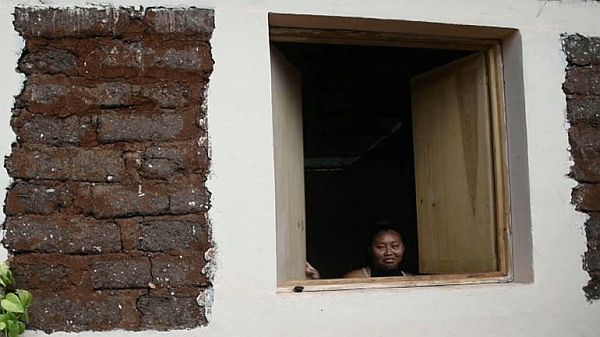Quintana Roo, Mexico - Seaweed provides vital protection for young marine creatures such as turtles, but on Caribbean beaches, a brownish seaweed is driving away tourists who provide an economic lifeline for many communities. Now, one man in Mexico may have found a solution to the problem - by building houses with the unwanted water plants. CGTN's Alasdair Baverstock reports.
Sargassum - Caribbean seaweed - is washing up on Mexico's Yucatan peninsula, which is home to the world-renowned beaches of Cancun, Cozumel and Riviera Maya.
The plants stain the pristine white sand, smell dreadful as they rot in the hot sun, and worst of all, chase the tourists away. But one local man has discovered tourism isn't the only reason to clear the beaches: he's building houses with seaweed.
 |
Vasquez discovered that by allowing the plant to biodegrade, and then mixing it as a primary ingredient in a traditional adobe, or mud brick, that the resulting material was durable and weather resistant.
"Sargassum is strong. If you try to rip it apart, it's hard," said Vasquez. "So that's why I started putting the clay with Sargassum and it worked."
Away from the all-inclusive resorts, the Yucatan peninsula is one of the most marginalized regions of Mexico, with 42% of the population living in poverty. These bricks, made from the seaweed that local authorities can't get rid of fast enough, are seen by many as a path to better living standards for the peninsula's rural communities.
Monica Gomez now lives in one of the seaweed houses, after a community outreach program built it for her family. "When it's cold outside, the house is warm, and when it's hot outside, the house is cool," she said. "Now I have a place to live with my kids, and I don't have to live with my mother."
Local authorities say it may take a while before seaweed brick making is profitable.
"It's very expensive to remove this seaweed from the beaches, so it will be great if the brick making enterprise can reach a point at which it's a sustainable business, that can pay for the seaweed's removal from the beaches," said Oscar Alvarez Gil, the Environmental Minister of Quintana Roo.
For the tourism industry that can't happen soon enough. Last year, the state of Quintana Roo removed around 150-thousand cubic meters of seaweed from the beaches alone. Thousands of tons more remained in the water.
Original article


